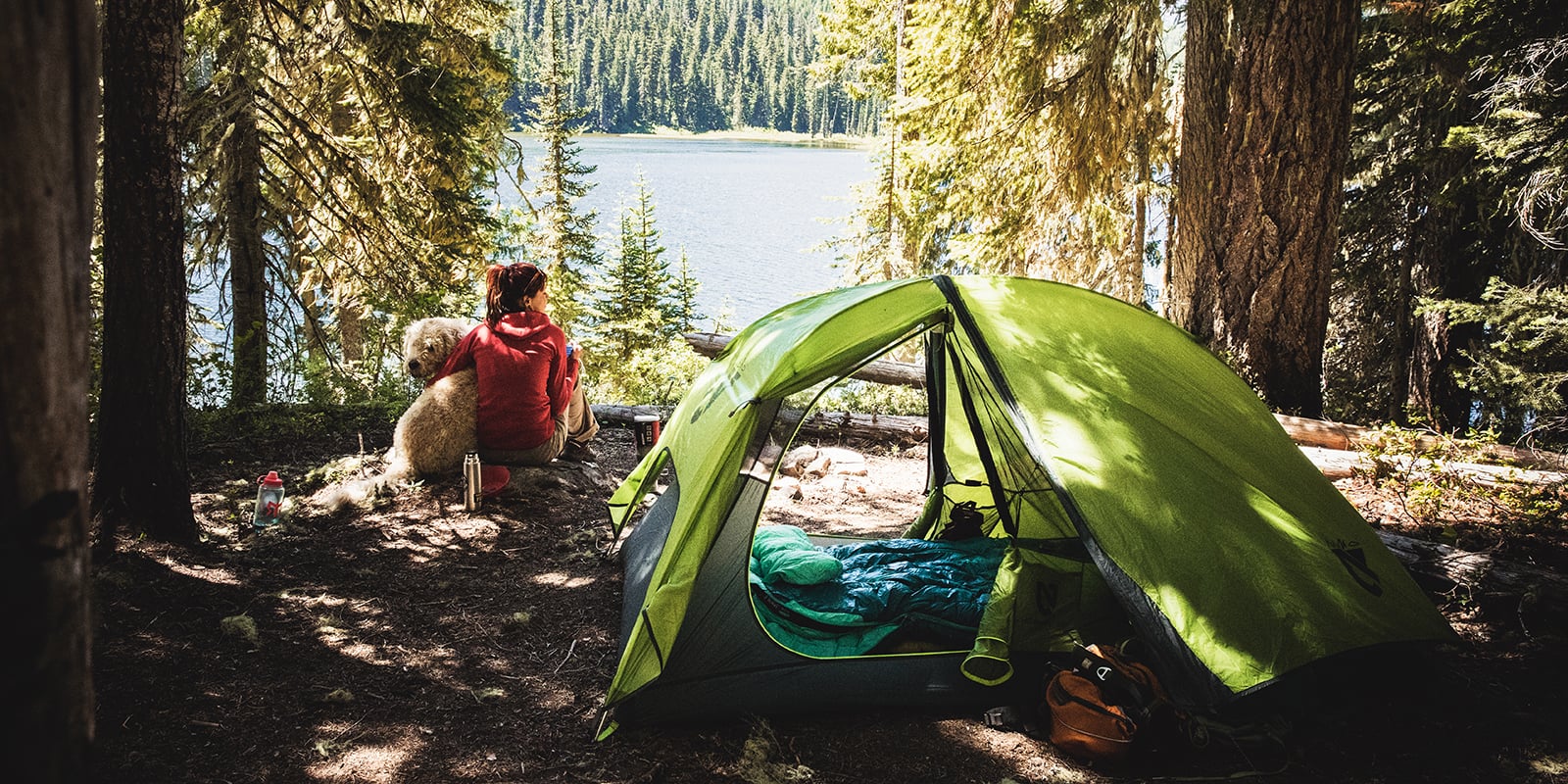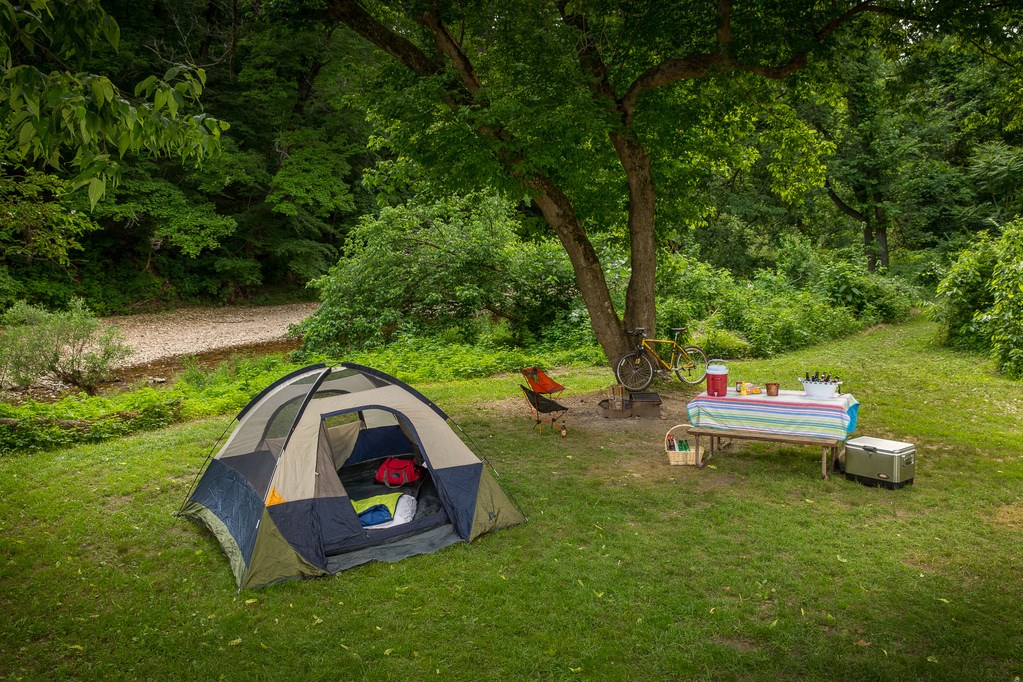You can camp almost everywhere, but where is the ideal place to spend the night? Spending the night in nature is not as easy as you might think. It is not enough to arrive at just any place, pitch your tent and set up camp. The camp site must meet certain minimum conditions. The following is a list of what an ideal campsite should meet
Safety. You never know when a tree branch, no matter how strong it may seem, will fall. It may only be the “pine cone” of a pine tree or some garbage thrown by animals, but this can be as unpleasant as a blow to the face or worse. The same goes for rocky walls, especially on top of it many plants grow.
Elevated above the generality of the terrain. Many campers choose a flat place, but this has its disadvantages in the rainy season, when the paradisiacal place is flooded in a matter of a couple of hours and it is impossible to find another place to camp, especially if it happens at night.
Natural drainage. Despite being above the ground, the drainage will make all the rainwater that comes, go away by itself. On the other hand, this prevents us from making one ourselves. In many places you can see ditches that have been dug around a tent (you can tell by the dimensions), but this only makes people who don’t know how to camp discover it.
Sheltered from the wind. You can look for a good solid rock, a group of trees or something similar to place the camp behind that natural barrier. If you do not have that protection, it is important to place the entrance of the tent or the most exposed part of the bivouac perpendicular to the wind.
This is because if the wind blows in one direction in the afternoon or at night, it will change in the opposite direction in the morning. But even in the case of finding this natural barrier that protects the camp, it is necessary to comply with this last requirement.
Thorny or stinging plants. On many occasions it will be necessary to camp in a place full of plants, but it is necessary to identify those that are stinging and thorny so as not to sleep near them.
In some places there are plants that are poisonous, and others that give off an aroma that can blind someone who sleeps under their shade. To find out if there are such plants, just ask the locals or other campers who have already been there.
Flat terrain. Although this is the first thing that every camper looks for when choosing a campsite, we have put it so far because we consider that it is necessary to choose a site free of risks.
A flat site is something we naturally tend to look for so as not to slip down the slope (especially if we happen to sleep with that slope on our side) and we generally forget what surrounds us.
Cleanliness. It should be free of branches, rocks and other objects that prevent a good rest. Many times we clean the place where we sleep and forget the rest, where one would walk through at night and trip over large branches. If the place has them, everyone should be aware of where each obstacle is or not go too far away if it is at night.
Water. Water is indispensable for drinking as well as for cooking and general cleanliness. Hence the indication that the place for the camp should have drinking water nearby. The springs themselves, where the animals drink at night, should be avoided.
Fires. In many camps there are campfires. However, the new camping is replacing them with gas stoves. Building a campfire has its risks. If a campfire is to be built, the site should be cleared of dry branches and anything else that could cause a fire. At night, it is important to extinguish it well and move any burning logs away from the embers.
Roads. Finally, the least pleasant place to camp is near busy roads or highways. It is as unpleasant for campers as it is for those who pass along the sidewalks and discover that the only road is obstructed by one, or more, tents.
It may be noted that there are two categories in this list: the first has to do with the safety of the camp and those who place it.
The second pertains to the philosophy of the sport itself: (no ditching, no sleeping near water sources so as not to prevent animals from drinking, no garbage left on the site, leaving it in better condition than we found it).
However, the division is purely rational. In practice one realizes that the two go hand in hand and that as long as we respect the environment in which we camp, we will enjoy our camping.
Kys to camping
For comfort at the time of sleeping, it is advisable to place a mattress or any other element with its characteristics, through which it is possible to isolate the floor of the tent from the sleeping bag or sleeping bag.
When choosing a sleeping bag or sleeping bag, it should be taken into account that the market offers different types, depending on the cold of the area to be visited. In any case, it is possible to sleep dressed if the bag is not warm enough, but if the bag is too warm it will be a very difficult problem to solve.
Both the clothes and the sleeping bag should be aired, after use and before storing them, in order to preserve their material and prevent them from adopting bad odors.
Campers come into full contact with nature, which explains why it is important for them to be respectful of their fellow campers and of nature itself.
Waste should be stored in a bag, transported and then placed in the corresponding container.


